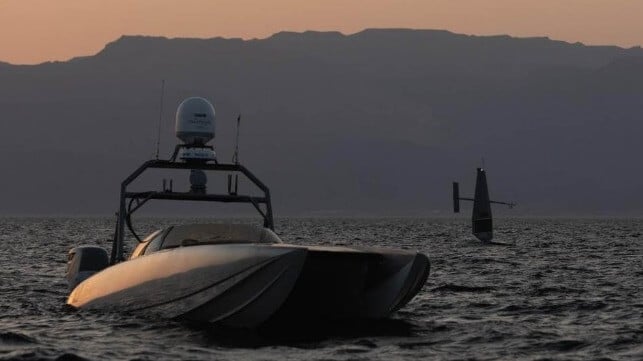NATO Wants to Use Drone Boats for Maritime Security in the Baltic

NATO's maritime forces may soon deploy unmanned systems for surveillance purposes in the Baltic, where member states have serious concerns about subsea infrastructure security.
Adm. Pierre Vandier (Marine Nationale), former chief of staff of the French Navy, heads up naval transformation for NATO. He recently told Defense News that unmanned systems could provide a "CCTV" surveillance network for maritime security hotspots, much like security systems used by police forces for shoreside law enforcement.
This concept was inspired by U.S. 5th Fleet's Task Force 59, which uses unmanned platforms to keep an eye on Iranian movements in the Persian Gulf and Strait of Hormuz. Systems like the unarmed Saildrone surveillance platform and the armed T-38 Devil Ray unmanned surface vessel have given Task Force 59 a meaningful demonstration-scale capability in the calm waters of the Middle East. Those demonstrations have informed Navy planning for full-scale unmanned deployment, which is now beginning in 5th Fleet with a manned-unmanned teaming "Task Group" trained by Task Force 59. U.S. Indo-Pacific Command has high hopes for unmanned systems in the Taiwan Strait, and the Pentagon is underwriting the rollout with its much-publicized "Project Replicator."
The need for maritime domain surveillance in the Baltic is urgent. Twice in the last two years, Chinese ships have destroyed subsea cables and other infrastructure in the Baltic by simply dragging anchor under power, plowing the bottom for dozens (or even hundreds) of miles. In 2022, unknown actors destroyed three out of the four pipes in the Nord Stream gas pipeline complex using explosives, and multiple investigations suggest that the attack was carried out by a small dive team using a recreational sailboat as a platform.
Finding these kinds of threats requires granular on-scene surveillance, starting with surface activity. "The technology is there to make this street-lighting with USVs," Adm. Vandier told Navy Times. He said that the idea has considerable support from NATO's maritime forces command, and could draw on proven platforms used by Task Force 59. d
